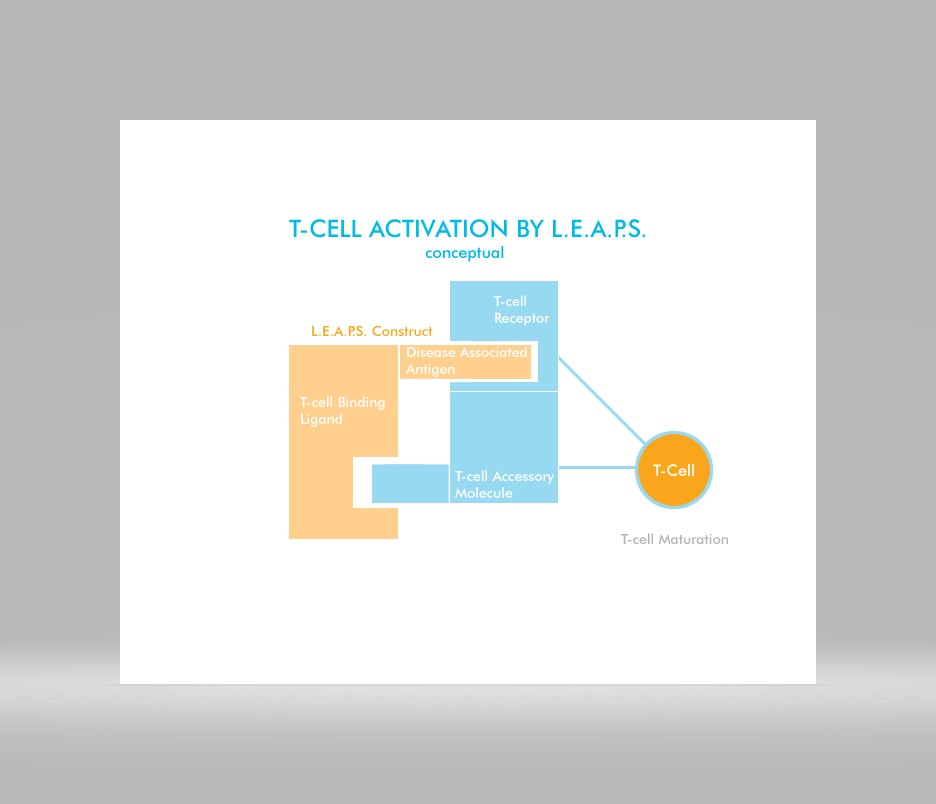What is LEAPS
L.E.A.P.S. is a patented, T-cell modulation, peptide epitope delivery technology that enables CEL-SCI to design and synthesize proprietary peptide immunogens. LEAPS* compounds consist of a small T-cell binding peptide ligand linked with a disease-associated peptide antigen.
This platform technology has been shown in several animal models to preferentially direct immune response to a cellular (e.g. T-cell), humoral (antibody) or mixed pathway. It has the potential to be utilized in diseases for which antigenic epitope sequences have already been identified, such as: a number of infectious diseases, some cancers, autoimmune diseases, allergic asthma, and allergy, and select CNS and other diseases (e.g., Alzheimer’s).
The LEAPS compounds are thought to be bi- or hetero-functional peptides, including an antigenic peptide (Ag) linked to another peptide referred to as a T-cell binding ligand (TCBL). This complex may allow the presentation of antigen to occur at the same time as delivery of a co-stimulatory signal. Several types of TCBLs have been evaluated. Two of particular interest are used and are designated TCBL peptides J and G or the modified version of G, DerG (CEL-1000). Conjugates of these appear to activate different sub-sets of T-cells. J is a short fragment from β-microglobulin (aa38-50) and G and DerG (CEL-1000) are a modified fragment from MHC II β-chain (aa135-149). Based on site directed mutagenesis studies of MHC II β-chain and/or peptide competition studies, G presumably and DerG binds to CD4, a T cell co-stimulator molecule.
The concept behind the LEAPS technology is to directly mimic cell/cell interactions on the T-cell surface using synthetic peptides. The LEAPS constructs containing the antigenic disease epitope linked to a T-cell binding ligand (TCBL) can be manufactured by peptide chemical synthesis or by covalently linking the two separately synthesized peptides. In animal studies CEL-SCI has demonstrated that depending on the type of LEAPS construct and TCBL used, it is possible to create peptides that when administered to animals (in the setting of animal studies) these peptide constructs are able to direct the immune response outcome towards the development of T-cell function with primarily effector T-cell functions (T Lymphocyte; helper/effector T lymphocyte, type 1 or 2 [Th1 or Th2,Treg, Th9, Th17, Th23], regulatory T-cell (Treg), cytotoxic [Tc] or suppressor [Ts]). Therefore, it would appear that LEAPS construct represents a chimeric peptide with bi-functional behavior (as depicted in the Figure below).
Schematic representation of a LEAPS construct and a receptor on the T cell
LEAPS is the name of CEL-SCI for this investigational platform technology. No LEAPS product has been approved for sale, barter or exchange by the FDA or any other regulatory agency for any use to treat disease in animals or humans. The safety or efficacy of these products has not been established for any use. Lastly, no definitive conclusions can be drawn from these early-phase, pre-clinical-trials data involving these investigational products.


